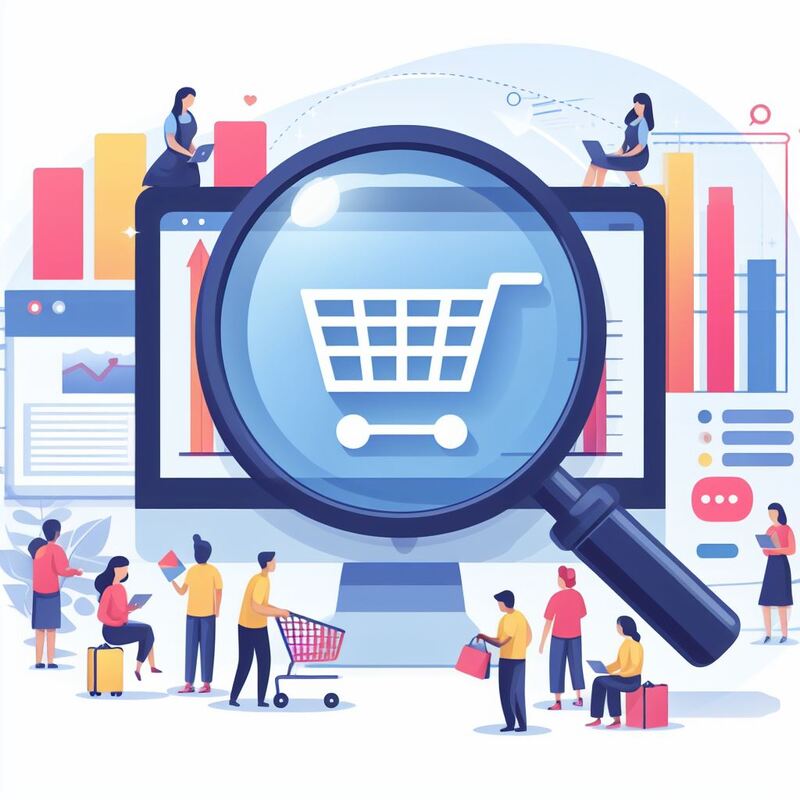Welcome to the wild, wild data west! You’re not just living in a data-driven world; you’re practically the sheriff of Data Town – whether you realize it or not. Every day, big data is sneaking around, dropping hints, and influencing your decisions – from which brand of toothpaste you buy to your mastermind business strategies.
In this rollicking article, we will pull back the curtain on how big data is not just shaping but salsa-dancing its way through decision-making. We’ll poke our noses into its role in businesses, tumble down the rabbit hole of successful case studies, and even take a cheeky peep into the crystal ball of the future.
So, hold onto your hats, data cowboys and cowgirls. There’s a whole universe of data ready for you to dive in – remember your swimming trunks!
Understanding Big Data
In the vast, uncharted wilderness of decision-making, understanding big data is like understanding why cats love boxes. It’s not just about mountains of information that could rival the height of Everest but also about your ninja skills to process and leverage it. Data privacy becomes as crucial as choosing the right meme for your group chat. You’ve got to tiptoe like a ballet dancer who’s stolen a cookie, ensuring you don’t trample on people’s rights while diving into an avalanche of data.
Then there are the tech gremlins that pop up. You’re not just wrestling with the Godzilla-sized task of storing and managing data mountains, but also becoming Sherlock Holmes to figure out how to analyze it effectively. You’ll often stumble upon antique systems that can’t keep up, leading to data handling as inefficient as a sloth on a treadmill.
To cut a long story short, understanding big data is like trying to solve a Rubik’s cube in the dark. It’s about being the privacy superhero, leaping over tech hurdles in a single bound, and making sense of a universe of information that could make even Einstein’s head spin!
Big Data’s Role in Business
With all its twists, turns, and mind-boggling puzzles, you might be scratching your head, wondering, ‘What’s the hoopla about big data in business?’ Turns out, big data can flip your business on its head for the better in countless ways.
- Data-Driven Decision Making: Big data spews insights like a broken fire hydrant, helping you make decisions that could turn your business into a high-performance, turbocharged machine.
- Customer Understanding and Targeting: It’s like having a crystal ball that lets you peek into your customers’ minds, helping you tailor your services or products with the precision of a master tailor.
- Data Security: With big data, you can sniff out potential security threats like a data bloodhound and squash them in their tracks, boosting your business’s data security to Fort Knox levels.
- Big Data Ethics: Remember, with significant data comes great responsibility. Misusing it can land you in hot water faster than a lobster at a seafood boil, damaging your reputation and attracting unwanted legal trouble.
Data-Driven Decision Making
You’ll start to see some serious magic in your decision-making process when you start flirting with big data. It’s like having a crystal ball; only the ball is a computer, and the magic is math. It can reveal patterns and trends, giving you the superpower to make decisions that would make Sherlock Holmes envious. But remember, with great power comes great responsibility. There are decision pitfalls, and data limitations that make banana peels on sidewalks look like child’s play.
Here’s a nifty table to explain, no magnifying glass required:
| Advantage | Potential Pitfall | Data Limitation |
|---|---|---|
| Informed decisions | Becoming a data-addict | Data might need a quality check |
| Predictive analytics | Ignoring your Spidey sense | Data relevance or irrelevance |
| Improved efficiency | Data interpretation giving you a headache | Drowning in a sea of data |
Beware of the pitfalls. Overdosing on data can lead to ignoring your gut feeling, while the inability to interpret data might make you feel like you’re back in high school math class. Understand the limitations, too. Ensure your data is of high quality (no fakes, please), relevant (like your morning coffee), and manageable in volume (not a tsunami).
Case Studies: Big Data Successes
Ready to dive into the ocean of big data? Don’t worry; there are no scary sharks here, just a bunch of happy dolphins showing us how to navigate and use big data to make serious waves.
- Netflix: Netflix is like that friend who always knows what you want to watch before you do. Using predictive modeling and real-time analytics, it recommends shows based on viewer preferences. It’s like having a psychic TV guide!
- Amazon: Amazon might as well be Santa Claus because it knows precisely what you want before you do! Thanks to extensive data analysis, Amazon can predict customer buying habits, making your online shopping experience as smooth as a freshly waxed surfboard.
- Google Translate: It’s no Rosetta Stone, but Google’s translation app sure knows its linguistics. It uses big data to improve language translation accuracy, making overseas miscommunications a thing of the past. Lost in translation? Not with Google!
- Uber: Uber might not have reinvented the wheel, but it has undoubtedly reinvented the taxi. Using real-time analytics, Uber can predict demand, decide prices, and allocate resources effectively. It’s like a crystal ball for your ride home!
These examples show how big data can be harnessed to revolutionize business models. It’s like having a magic wand that conjures data-driven decisions. So, are you ready to take the plunge into the big data ocean?
Future of Big Data in Decision-Making
Diving deeper into the sea of big data, you’re set to explore how its future evolution could further revolutionize decision-making. It’s like getting a crystal ball that works! As data volumes continue to inflate like a balloon on steroids, Predictive Analytics will become more refined, providing businesses with accurate forecasts that could put your local weatherman out of a job.
But don’t forget, with significant data comes great responsibility. These advancements will also bring about a need for more robust Data Privacy measures – think of it like the bouncer at the club but for your data.
Let’s peek into the future, shall we? Here’s what’s cooking:
| Future Trends | Implications | Measures |
|---|---|---|
| Advanced Predictive Analytics | Decisions so accurate, they're borderline creepy | Invest in analytical tools, or better yet, a crystal ball |
| Data Privacy Concerns | Potential data breaches and legal issues. Yikes! | Enhance your security protocols; it's cheaper than an apology tour |
| Data-Driven Innovation | New business opportunities popping up like popcorn | Encourage a data-centric culture, start data-themed parties, maybe? |
Ultimately, you’ll need to balance the benefits of big data with ethical considerations as you navigate the future of decision-making. It’s like walking a tightrope but with data instead of danger. Unless you’re afraid of numbers, then it’s just as scary.
Frequently Asked Questions
What Are the Potential Risks and Challenges in Using Big Data for Decision Making?
Diving into the world of big data for decision-making is like trying to change a light bulb in the dark! There are risks, such as data accuracy, that can twist your results faster than a pretzel at a bakery. Then there’s the sneaky algorithm bias, just lurking around the corner, ready to throw you curveballs of unfair or incorrect decisions. It’s a challenging landscape that could give a Rubik’s cube a run for its money!
What Are the Ethical Considerations in Handling and Analyzing Big Data?
When playing with the big boys of big data, you have to juggle some ethical hot potatoes. It’s all about mastering the art of data bias, or rather, making sure it doesn’t sneak into your numbers like a ninja in the night. And hey, we should all be like Swiss banks regarding individuals’ privacy during the analysis process, not like gossipy neighbors peeking over the garden fence.
How Can Businesses Protect the Privacy of Individuals While Using Big Data?
To shield an individual’s privacy while bossing around with big data, you’d need to deploy something like a data encryption method on steroids. It’s also critical, like the last slice of pizza at a party, to get a grip on the rollercoaster ride that is privacy legislation affecting your data juggling and analysis.
Can Big Data Analysis Completely Replace Traditional Decision-Making Methods?
While extensive data analysis, with its striking predictive analytics and data accuracy sharper than a brand-new pencil, jazzes up decision-making, it can’t completely replace traditional methods. You’ll still need the good ol’ human judgment, just like a cup of coffee on a Monday morning, to interpret and apply its insights. It’s like asking a robot to appreciate a good joke – some things need the human touch!
How Can Employees Be Trained to Use Big Data in Their Decision-Making Processes Effectively?
To effectively use big data in decision-making, you’ll need data literacy training. Think of it as Hogwarts for data nerds! This magical journey will equip you with the necessary skills to understand and use decision-making algorithms, enhancing your ability to make informed choices. So grab your wand (or, in this case, your computer mouse) and get ready to step into considerable data wizardry!
Conclusion
In conclusion, you’ve seen how big data struts itself on the decision-making stage, driving business success like a souped-up sports car. It’s not just a buzzword; it’s an essential tool in today’s world, where data is the new oil – or maybe more like the fresh coffee, keeping us all awake and alert. From case studies, you’ve seen its power and potential, like a data superhero swooping in to save the day. As the future unfolds, like a never-ending roll of toilet paper, big data’s role will only expand. So, embrace it, dive into the data like a pool filled with marshmallows, and let it guide your decisions. Big data isn’t just changing the game; it’s turning it into a disco party!




